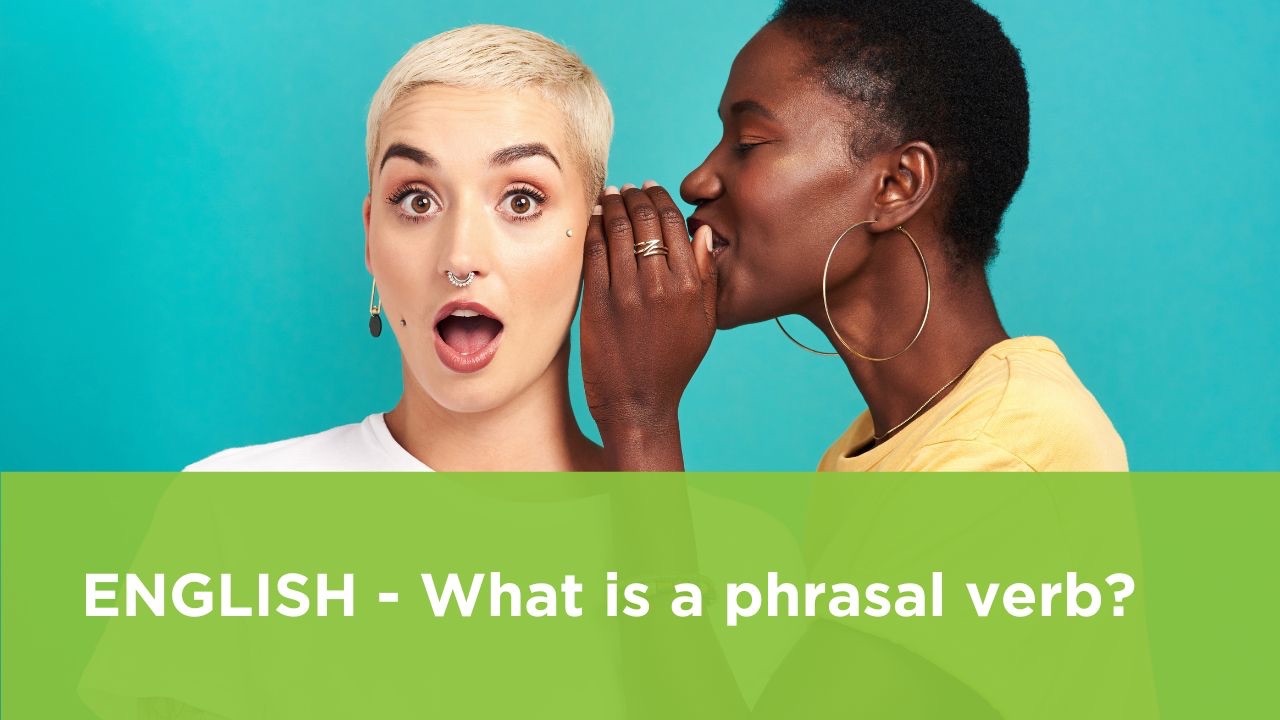What is a phrasal verb?
Sep 19, 2024
Audio: 5 min. 03 sec.
Phrasal Verbs: What are they and how do I use them?
One of the most difficult parts of English to pick up is knowledge about phrasal verbs.
There are many of these words in the English language, but what are they and why do so many people struggle to learn them?
This blog will explain what they are and why they are so important.

WHAT IS A PHRASAL VERB?
A phrasal verb is a kind of verb, so it’s an action word. What makes them different to regular verbs is that they are made up of 2-3 words.
Some basic examples of phrasal verbs are TURN OFF, GET ON, and LOOK DOWN ON.
You can see that all three of these include a verb but also a preposition or adverb, which is known as a PARTICLE when it is part of a phrasal verb.
The tricky thing here is that the included verb’s meaning is different to what it means as part of a phrasal verb.
Take TURN OFF: TURN means to change direction but TURN OFF means to deactivate something or disable its power.
This is not the same as how we usually use prepositions with verbs.
If you take the verb GO, we usually use it with TO: Go to work, go to the shops, and so on.
However, the preposition TO doesn’t change the meaning of GO, so this is not a phrasal verb.
You can always test if something is a phrasal verb or not by seeing if removing the particle changes the meaning of the verb or not.
So why do you need to know this? Well, there are thousands of phrasal verbs in English and they are used all the time.
Phrasal verbs can usually substitute for a single verb (For example: TURN ON means the same thing as ACTIVATE) and are used frequently in casual conversation.
The average native speaker does not really think about whether they are using regular verbs or phrasal verbs but for you as a learner this means you will have to commit to learning phrasal verbs whenever you hear them.
It is worth writing them down in your vocabulary notebook as well as an explanation or example to help you remember what they mean.

TYPES OF PHRASAL VERB
Grammatically, there are 4 different types of phrasal verb: Intransitive, separable transitive, inseparable transitive and three-part phrasal verbs.
Intransitive phrasal verbs have no object, so they follow the same rule as regular intransitive verbs.
“He ran away.”
Separable transitive phrasal verbs can be identified by the ability to separate the verb from its particle.
“I turned on the light.” “I turned the light on.”
Note that this phrasal verb type has a special rule: If the object is a pronoun, you MUST separate the verb and the particle.
“I picked him up.” NOT “I picked up him.”
Inseparable transitive phrasal verbs, as the name suggests, do not allow you to separate the verb from its particle.
“I got on the bus.” NOT “I got the bus on.”
Finally, three-part phrasal verbs have two particles instead of one. They are also inseparable.
“He always looks down on me.”

HOW CAN I LEARN ALL THESE?
It can be a real challenge to master phrasal verbs.
The key is to organise your vocabulary notebook and make sure you keep track of new phrasal verbs as you learn them.
You can group them by unit if you are studying using a textbook or as part of a course but if you are doing self-study, it can be easier to organise phrasal verbs by topic (Food, transport) or by particle (Phrasal verbs with IN, Phrasal verbs with DOWN).
Once you have written down a significant number (20 or more), I recommend turning them into flash cards and testing yourself on their meanings.
You can even carry some of the flash cards in your pocket to remind yourself to try and use them in day-to-day conversation.
Phrasal verbs are one of the hardest parts of English to master but if you READ OVER your notes, LOOK UP new phrasal verbs as you find them and RUN THROUGH them for practice, you’ll find that you can TAKE THEM IN and use them with confidence!


